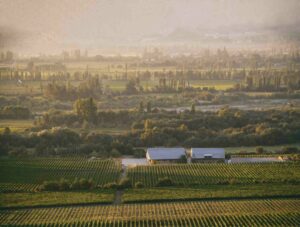Due to a “perfect storm” of economic, social and environmental factors, our business landscape is becoming more and more volatile.
Due to a “perfect storm” of economic, social and environmental factors, our business landscape is becoming more and more volatile.
The pace of change, too, is increasing. To succeed in business we must be agile, creative, alert, spontaneous, and responsive – often operating in completely new ways. Today’s rapidly changing business environment calls for businesses that thrive in rapidly changing environments: businesses more akin to living systems. These “Firms of the Future” can learn and adapt; they aren’t structured and siloed, which stifles learning and agility. These firms are also bottom-up, decentralized, interdependent, multifunctional, emergent, self-organizing units– not the centralised, top-down, hierarchically managed monoliths of the 20th century.
Put simply, the business models and management approaches that served us well in the past are no longer fit for purpose in a business context where dynamic change is the new norm.
Professor Michael Porter said a few months ago when addressing business leaders in New York: “The old models of corporate strategy and capitalism are dead. We are witnessing a paradigm shift from hurting to helping.”
Organizations that are able to let go of old business paradigms, having the courage to embrace new ways of operating while dealing with the pressing short-term issues of today, shall be the ones who can weather the storm, adapting to seek out opportunities in these volatile times. Other organizations, fearfully clinging to practices that are no longer fit for purpose for the times within which we now operate, shall struggle to cope with the level of change ahead.
It requires great courage to break rank from a paradigm that is so ingrained in our business mindset; to transform in the face of pressing short-term pain.
The years ahead to 2020, in this decade of creative destruction and reconstruction, shall bear witness to the wheat being separated from the chaff – organizations that “get it” adapting and evolving, and those that do not perishing or being acquired. Bold “Firms of the Future” do not try and tightly manage change; they empower a culture of collaboration to unlock the creative potential of their own workforce, their partners and the communities they serve, initiating positive virtuous cycles of collaboration, innovation, and value creation for all stakeholders. The result: more value, bigger margins and higher well-being.
As Dawn Vance, Director of Global Logistics at Nike succinctly puts it:
“Organizations have three options:
-
Hit the wall;
-
Optimize and delay hitting the wall; or
-
Redesign for resilience – simultaneously optimizing existing networks whilst creating disruptive innovations and working collaboratively with partners.”
It is this “redesigning for resilience” that drives the transformation from a Firm of The Past to a Firm of The Future. The Firm of the Future is one that:
-
Drives transformation through values-based leadership and stakeholder empowerment using the catalysts of education, innovation, inspiration, and collaboration;
-
Encourages synergies across its business ecosystem, engaging with multiple stakeholders in an open, transparent way, where common values create connections enabling mutualism;
-
Harnesses the power of social networks and the “pull” media using crowd sourcing, co-creation, open source collaboration, and transparent branding for differentiation;
-
Evolves ecological thinking for innovating, new ways of operating, and value generation for every stakeholder within the community it serves.
The pressure for change is increasing all the time. Well-publicized forward-thinking organizations are already making headway on their transformational journey – Unilever, Puma, InterfaceFLOR, General Electric, Patagonia, Procter & Gamble, John Lewis Partnership, and Marks & Spencers, to name a few. Visionary business leaders of today are already making the first steps on this transformational, emergent path for themselves and their businesses.
And it is a journey rather than a destination. Transforming towards a Firm of The Future is not about designing the right business model and implementing it. It is about understanding the ethos, ethics, and environment that will allow the organization, individuals, and wider stakeholder community to best flourish, adapt, and evolve. It’s an emergent journey, a journey that encourages diversity in approaches and outcomes, one where it is good to make mistakes, even fail, as it generates learning to move forward in a more resilient way.
About the Author
Giles Hutchins is a UK-based management consultant with more than 15 years of business and IT transformation experience, formerly with KPMG and more recently with Atos International. His passion is exploring ways of applying nature’s inspiration to sustainable business transformation. Drawing on a range of theories and practices (such as biomimicry, cradle-to-cradle and industrial ecology) he applies them to the challenges businesses face today, providing practical insight and guidance to help organizations redesign for resilience in these volatile times. He works with many leading organizations in the field of sustainability and business transformation, including Biomimicry for Creative Innovation (BCI) and Tomorrow’s Company.


Add a Comment
This site uses User Verification plugin to reduce spam. See how your comment data is processed.This site uses User Verification plugin to reduce spam. See how your comment data is processed.